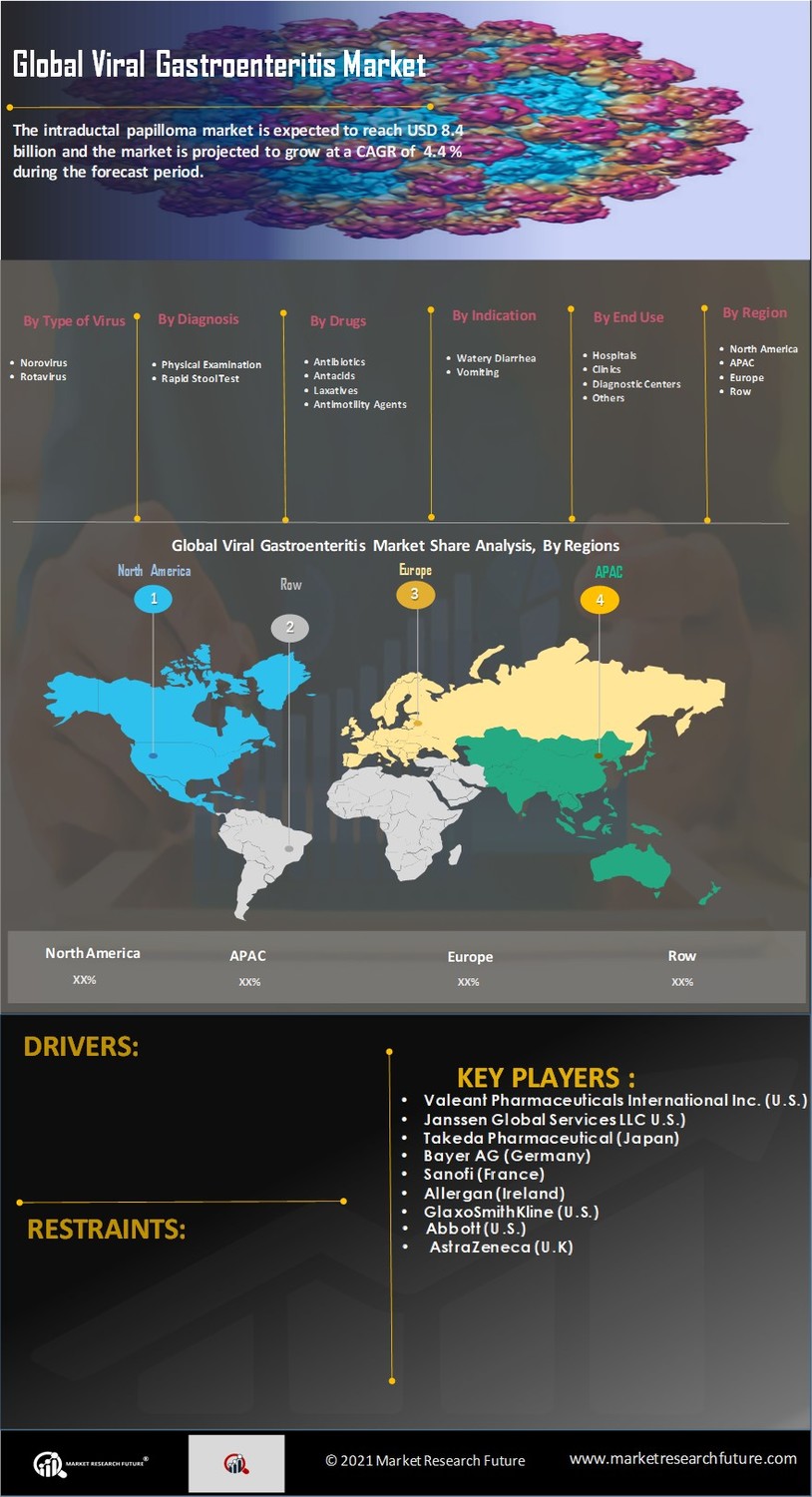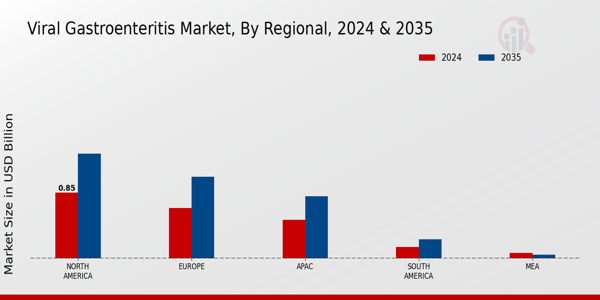Rising Healthcare Expenditure
Rising healthcare expenditure is a fundamental driver of the Viral Gastroenteritis Market. As countries allocate more resources to healthcare, there is a corresponding increase in funding for the prevention, diagnosis, and treatment of viral gastroenteritis. This trend is particularly evident in regions where healthcare systems are being strengthened to address infectious diseases. Increased spending on healthcare infrastructure, including hospitals and laboratories, facilitates the development and distribution of advanced diagnostic tools and treatment options. Furthermore, the emphasis on improving healthcare access and quality is likely to enhance the overall response to viral gastroenteritis, thereby fostering growth within the Viral Gastroenteritis Market.
Growing Demand for Preventive Healthcare
The growing demand for preventive healthcare is a crucial driver in the Viral Gastroenteritis Market. As populations become more health-conscious, there is an increasing emphasis on preventive measures to reduce the incidence of viral gastroenteritis. This trend is reflected in the rising uptake of vaccines and public health initiatives aimed at educating communities about hygiene practices. The market for preventive healthcare solutions is expected to expand, with investments in vaccination programs and health education campaigns likely to increase. This shift towards prevention not only aims to reduce the burden of disease but also enhances the overall efficiency of healthcare systems, thereby positively impacting the Viral Gastroenteritis Market.
Impact of Climate Change on Disease Patterns
The impact of climate change on disease patterns is emerging as a significant factor influencing the Viral Gastroenteritis Market. Changes in climate can affect the transmission dynamics of viral pathogens, potentially leading to increased outbreaks of gastroenteritis. Warmer temperatures and altered precipitation patterns may create favorable conditions for the spread of viruses like norovirus. Public health authorities are increasingly recognizing the need to adapt to these changes, which may involve enhancing surveillance systems and developing targeted interventions. As the relationship between climate change and viral gastroenteritis becomes more evident, the market may see a shift in focus towards research and strategies aimed at mitigating these impacts, thereby driving growth in the Viral Gastroenteritis Market.
Increasing Incidence of Viral Gastroenteritis
The rising incidence of viral gastroenteritis is a pivotal driver in the Viral Gastroenteritis Market. Reports indicate that viral gastroenteritis affects millions annually, with norovirus being a leading cause of outbreaks. The World Health Organization estimates that norovirus alone causes approximately 685 million cases of gastroenteritis each year. This increasing prevalence necessitates enhanced healthcare responses, including diagnostics and treatment options, thereby propelling market growth. As healthcare providers and governments prioritize the management of viral gastroenteritis, investments in research and development are likely to surge, further stimulating the Viral Gastroenteritis Market. The heightened focus on prevention and control measures, including vaccination and public health campaigns, may also contribute to the market's expansion.
Technological Advancements in Treatment Options
Technological advancements in treatment options are significantly influencing the Viral Gastroenteritis Market. Innovations in antiviral medications and supportive therapies are emerging, providing healthcare professionals with more effective tools to combat viral gastroenteritis. For instance, the development of rapid diagnostic tests has improved the speed and accuracy of identifying viral pathogens, allowing for timely interventions. The market for antiviral drugs is projected to grow, with estimates suggesting a compound annual growth rate of over 5% in the coming years. These advancements not only enhance patient outcomes but also drive demand within the Viral Gastroenteritis Market, as healthcare systems seek to adopt the latest technologies to improve care.



















Leave a Comment